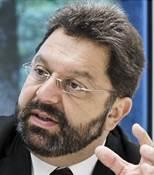
Executives, like all human beings, behave the way they do because of a combination of genetic and experiential factors: To start with, each of us has been designed to function more effectively and efficiently in some ways. Then our experiences – especially our pre-adult experiences – have contributed to reinforce some of these predispositions and override others. The net result is a series of neural connections that allow us to function quickly and, for the most part, effectively enough.
By the time their owner has become a senior executive, these neural connections have become pretty strong, which allows them to trigger behaviour without us having to expend much energy; it’s become a very efficient process. In some cases, however, some of these neural connections lead us to behave in ways that are not effective enough. Typically, the behaviour does have some advantage for us; if it was 100 percent dysfunctional it would not have survived, we would have learned another one. So the behaviour is probably effective in some ways, and ineffective in others, and that balance may have been acceptable for you until now.
But looking towards the future and an increasing set of responsibilities at work and/or at home, you can see that this behavioural pattern is going to be holding you back; it is going to hamper your effectiveness and/or your efficiency to a significant enough extent.
In the first part of this series, we examined the four obstacles executives face when trying to develop new leaderships skills:
- The knowing-doing gap, which leads executives to think, “I know I should be doing X, and it’s OK because I’m already doing it.”
- Executives tend to under-estimate how difficult to implement leadership techniques really are, which leads them to think “I realise I’m not doing X, but I’ve now understood X and things are now going to be fine."
- Even when one has sufficient mastery of the knowledge, actually translating this knowledge into behaviour that runs against one’s habits requires time, energy and self-control, enablers that are already severely taxed for most senior executives. Implementation is hence going to be costly and/or ineffective at times, which often leads to discouragement and conscious or unconscious reduction in efforts.
Executives’ efforts to develop new behaviours often perturb the equilibrium situation they had reached with members of their ecosystem, who are often unwilling and/or unable to change their own behaviour in ways that would support the executives’ efforts. Understanding these four challenges doesn’t make the change easy, but it makes it easier for executives to accept that the change process is demanding and they must hence approach it with courage and persistence. It also helps to identify four pillars that can be extremely useful to executives who want to modify some aspect(s) of their leadership style.
Four ways to practice
- Focus a sufficient amount of efforts
- Instead of spreading your time and energy across a few dimensions, select one skill that is of significant importance to you and where you feel that improving on this dimension will deliver a very high return on investment.
- Read about this practice/behaviour. Make notes and regularly review your notes.
- Phrase your goal positively (instead of negatively, as in “I will stop …”), and break it down into small, manageable components.
- Packed agendas lead to “ego depletion” (the depletion of your self-control reserve) which leads to low impulse control, so plan and enforce a few short breaks for yourself during the day.
- Invest time and effort to ensure you will be receiving enough support from key stakeholders.
- Develop your mindfulness
- Most executives spend a great deal of time on “automatic pilot”, on anticipating the future (to try to predict what will or might happen, and in the process often experiencing some form of concern, fear or anxiety) and on thinking back to the past (generally to entertain some form of regret). As a result they are rarely completely here-and-now, i.e., completely focused on what is happening at this moment, in this place, with these people.
- Yet to intercept habitual response and to craft a more productive response one needs to be present here-and-now; one needs to be mindful. Developing one’s ability to regroup here and now is hence an essential enabler for implementation of new knowledge and the development of a new capability.
- There is a growing amount of evidence showing the benefits of mindfulness and how to develop it. This growing scientific consensus was discussed extensively at the 2014 World Economic Forum and was recently nicely summarised in a Time Magazine cover story entitled “The Mindful Revolution”.
- To help you come back to here-and-now, the practice offering the biggest return on time and energy invested is a few minutes (start with two minutes) of conscious/mindful breathing. Breathing mindfully means being fully aware of your breath, of the air coming in and out of your lungs, and trying to think of nothing else. If you’re new at this, it may help you to accompany the breathing with a few words in your head, such as "Breathing in, I know I am breathing in. Breathing out, I know I am breathing out." Or for short “ In” as we breathe in, "Out" as we breathe out. If you manage to take ten to fifteen such mindful breaths, you will have regained some mindfulness and a measure of calmness.
- Develop your reflectiveness/reflective practice
- Stopping one’s habitual response, identifying and producing the better response (e.g., saying the right words with the right body language) is hard enough under calm and slow conditions; It is even more difficult to do under time and performance pressure.
- One way to make it easier for yourself is to prepare better for meetings and situations. Thinking ahead to likely or simply to possible future situations allows us to envisage several scenarios and consider several responses.
- Similarly, we can learn much from reflecting back on past situations and interactions to try to identify what we did well and less well, as well as why we reacted the way we did.
- Some individuals make it a habit to reflect at least once daily. The Mahatma Gandhi, for example, systematically made time throughout his life to review his day’s actions. His secretary, Pyarelal, reported that well into his seventies, Gandhi daily “held a silent court with himself and called himself to account for the littlest of his little acts. Nothing escaped his scrutiny. He gave himself no quarter”.
- Be persistent and have faith
- For all the reasons we discussed above, and even when your resolve is strong and your efforts well focused, implementing new leadership knowledge and developing a new skill is unlikely to be an easy, linear process. It is more likely to be frustrating at times, and there is no doubt that you will suffer some setbacks along the way.
- When you do, don’t feel too bad! Try to understand what the setback/breakdown is teaching you about yourself, about others or about this kind of situation; capture this insight in writing, so you can review it again later; and then get back to your change effort.
- If you start doubting, remember that Thomas Edison, one of history’s greatest inventors, “failed” a great many more times than he succeeded. When people commented to him that another experiment had just failed, he apparently responded something like ‘no, I haven't failed, I have just found another way that doesn't work.’ And, he added "I am not discouraged, because every wrong attempt discarded is another step forward".
Warren Bennis devoted much of his long and illustrious career to studying and educating leaders. On the basis of decades of study, he concluded that:
“The truth is that major capacities and competencies of leadership can be learned, and we are all educable, at least if the basic desire to learn is there and we do not suffer from serious learning disorders. Furthermore, whatever natural endowments we bring to the role of leadership, they can be enhanced; nurture is far more important than nature in determining who becomes a successful leader”.
Developing new leadership behaviours and the capability to produce these behaviours under real life conditions with reasonable effort does not require you to “change your personality”. At your age, your personality will pretty much remain what it is! But the evidence on neuroplasticity (also called brain plasticity) is now fairly clear: Throughout our lives we have the ability to develop new neural connections which, if we practice them enough, will become stronger over time and will make the new behaviour feel increasingly “natural” to us.
That’s the good news. Of course, this process doesn’t come for free; it requires disciplined effort.
Over the last few decades, the world has increasingly accepted the benefits of regular physical exercise. Most senior executives have developed some form of physical activity routine. Many of them hire a coach to support them in this area, and those who practice a sport like tennis or golf do not expect a few days of lessons to lead to improvement that will be sustained over years; they understand and accept that internalisation of corrected physical movements (e.g. one’s backhand or golf drive) will require months if not years of regular practice.
A growing amount of evidence suggests that senior executives hoping to develop their leadership agility and capabilities need to approach this process with some of the same intensity and persistence as they have learned to allocate to physical exercise.
Leadership development professionals also need to adapt their practices in order to do a better job at helping executives to increase the return on their leadership development investment. It is with this objective in mind that we designed and launched the LEAP – Leadership Excellence through Awareness and Practice – programme.

-
View Comments
(2) -
Ulrich Neuhauss
Thank you Jean-Francois for the excellent article. It explains well where the real issues are and, even better, suggests how to deal with these issues. Once personal leadership development becomes a habit, then we are on a good path. It is just more complex as it demands a "less me" approach going beyond the societal norms and "habits" acquired throughout life. The right environment with the right people will support the change and makes a hiring process an even more important task.
-
Leave a Comment




Anonymous User
01/05/2014, 07.58 pm
This is a real useful, article which may be useful as a practical pathway for personal change and improvement. Already known by the ancient Greek philosophers, mere accumulation of knowledge (Polymathia!) doesn´t make sense, unless accompanied by profound reflection and a search of Logos! Without reflection, no good action and no change! Thank you Jean-Francois Manzoni for your excellent ideas!